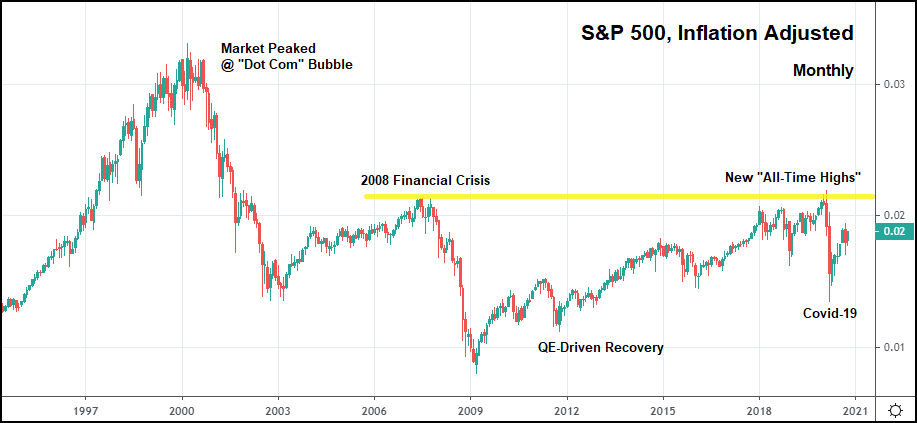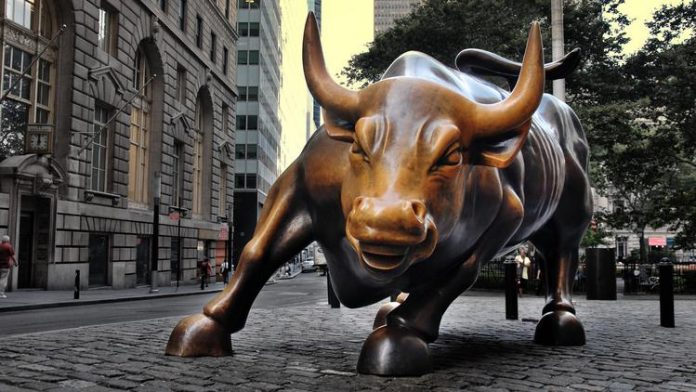Tired of hearing about a stimulus deal? So is everyone else.
But stocks are rising again this morning as investors eye the ongoing stimulus negotiations in Washington. It’s a case of “same story, different day,” but one that continues to repeat itself. Last week, the market logged three winning sessions in a row – all driven by potential coronavirus relief.
If equities can close higher today, they’ll make it four straight.
And, much like over the last few months, Big Tech is leading the way. Apple (NASDAQ: AAPL) shares soared at the open. The stock’s up almost 5% in response to broader bullish support and a highly anticipated company event, scheduled to take place tomorrow at 10 a.m. PST.
Apple’s expected to announce the iPhone 12 as well as a handful of other products. To Morgan Stanley analyst Katy Huberty, that’s call for celebration.
“We expect this fall’s launch to be the most significant iPhone event in years,” she said.
Unsurprisingly, bulls took the bait and sent AAPL zooming in pre-market trading.
But, overall, the market seems intent on rising, even without a big AAPL announcement in the near future.
Because, again and again, stimulus reigns supreme. It’s long been observed how stimulus-dependent the market has grown since Covid scorched share prices.
Wall Street’s behavior over the last week and a half confirms that little has changed in that regard.
And though every “buy and hold” investor wants to see the market rise, the truth is that it’s not really gaining much ground in terms of inflation-adjusted dollars.
Instead, equities have only shielded investors from the effects of a constantly ballooning dollar supply.

The chart above adjusts the S&P 500 for inflation by dividing the index by M2, or the U.S. monetary supply (including liquid and less-liquid dollars as measured by the Federal Reserve).
And while tempering the S&P with M2 isn’t a perfect gauge of how stocks are hit by inflation, it’s a very close, if not more accurate take on it as M2 often precedes inflation.
You can see that back in 2000, things were going great until the “Dot Com” Bubble burst. The market plunged before finally starting to recover in 2003. Then, five years later, the 2008 Financial Crisis rocked equities, driving share prices down to a 13-year low (not adjusted for inflation).
And when divided by M2, stocks dropped to an even worse 22-year low. The market ended up recovering in the years that followed, setting new non-inflation-adjusted highs in 2013 and beyond.
But, when adjusted for M2, the S&P didn’t exceed its 2008 high until January 2020, earlier this year. An unprecedented glut of quantitative easing (QE) propped-up the U.S. economy after the Financial Crisis.
In the process, though, it severely wounded investors’ ability to generate real stock market returns. The poor, unfortunate souls that bought-in near the top of the “Dot-Com” Bubble, are actually down roughly 30% on their portfolio right now, assuming they bought the index.
Those people “bought and held” for 20 years, only to get a shrunken nest-egg for their efforts.
Are they to blame for their folly? Absolutely not. Neither are their financial advisors, who couldn’t have predicted the no-holds-barred, money printing bonanza that ensued.
After all, Warren Buffett – the “Oracle of Omaha” himself – says buy and hold investing is still the way to go.
The truth, however, is anything but. The Federal Reserve made sure of that in 2009 when it uncorked a massive round of QE. Now, it’s getting even worse thanks to the enormous stimulus packages being activated to support a Covid-stricken U.S. economy.
Short-term, stocks will erupt once more when the next stimulus package arrives. But long-term, “buy and holders” will see their real returns get slowly siphoned away.
All because Uncle Sam can’t let the current economic cycle come to an end.
Even after a wave of lengthy, productivity-killing lockdowns.








